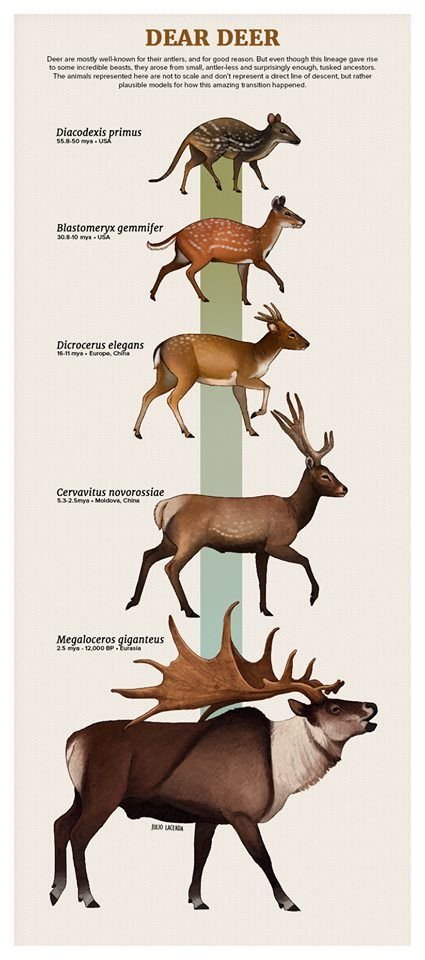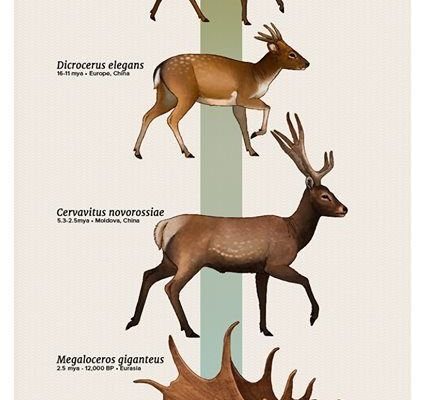
The story of the red deer is like a tapestry, woven from threads of adaptation and survival across millennia. From ancient ancestors roaming the Earth to the modern-day red deer we know today, each chapter reveals how this species has persevered through dramatic environmental shifts. So, let’s delve into this evolutionary saga and uncover where these incredible animals came from and how they’ve adapted to the world around them.
Origins of the Red Deer
The red deer, scientifically known as Cervus elaphus, traces its roots back to ancient Pleistocene epochs. This species is part of the Cervidae family, which includes other deer species. The earliest ancestors of the red deer resemble creatures who thrived in the rich and varied ecosystems of Europe, Asia, and North America. They adapted to diverse environments, thriving in forests, open grasslands, and even mountainous areas.
Over time, these early deer developed traits suited to their habitats. Their size, for instance, relates closely to the availability of food and the climate. In colder regions, larger body sizes help retain heat, while in warmer areas, smaller sizes help dissipate it. This adaptability is critical for their survival, showcasing the intricate dance between species and their environments.
You might be wondering how they spread across continents. The movement of ancient populations and changes in climate led to various subspecies, each adapting to local conditions. So, the red deer we recognize today is just one branch of a much bigger family tree.
Development of Key Traits
As we travel through time, we see the evolution of specific traits that make red deer unique. One of the most striking features is their antlers. Unlike horns, which are permanent, these antlers grow and shed annually. This remarkable process is linked to their breeding season, or rut, where males compete for mates. The antlers are not just for show; they symbolize health and genetic fitness.
During the rut season, you might hear the distinctive roaring of male red deer, a sound that echoes through the forests. This vocalization plays a crucial role in attracting females and establishing territory. The evolution of social behaviors tied to mating has been significant, as it enhances the likelihood of reproductive success.
Additionally, the red deer’s coat has evolved to help them thrive in diverse climates. Their thick, reddish-brown fur provides both camouflage and insulation, allowing them to blend into their surroundings while keeping warm during cold months. This adaptability demonstrates the delicate balance between survival and reproduction in the ever-changing environment.
Geographic Distribution
Throughout history, red deer have spread widely, adapting to various environments across Europe, Asia, and parts of North Africa. Each population has developed its own unique characteristics based on the local ecology. For example, the Scottish red deer are known for their larger size compared to their cousins in the Mediterranean regions, where the climate is milder.
The expansion of the red deer population was influenced by both natural processes and human activities. As forests were cleared for agriculture, red deer found new habitats in the fringes of these ecosystems. This adaptability ensured their survival despite significant environmental changes.
However, it’s not all been smooth sailing. Overhunting and habitat loss in certain regions have caused declines in red deer populations. Conservation efforts have become vital, ensuring that these majestic animals continue to thrive in areas where they can adapt and flourish.
Impact of Human Interaction
The relationship between red deer and humans has been complex. Early humans depended on red deer for food, clothing, and tools. Cave paintings from thousands of years ago depict scenes of deer hunting, highlighting their importance in ancient cultures. As societies evolved, so did our interactions with these creatures.
In many cultures, red deer have become symbols of strength and beauty. In Celtic mythology, they were often seen as messengers between the physical and spiritual worlds. Today, they still hold significant cultural value in various societies, drawing tourists and nature lovers alike.
However, as urbanization increased and landscapes changed, red deer faced new challenges. Over time, humans encroached on their habitats, leading to conflicts and further pressures on populations. Understanding these dynamics is crucial for developing effective conservation strategies and promoting coexistence between humans and wildlife.
Modern Conservation Efforts
As we move into the present, the conservation of red deer has taken center stage. Because of their declining numbers in certain regions, various organizations and governments are working to ensure their survival. This includes protecting their habitats, establishing wildlife reserves, and promoting sustainable hunting practices.
In places like the Scottish Highlands, conservation efforts have led to the establishment of protected areas where red deer can thrive without human interference. These initiatives not only help the deer but also benefit the entire ecosystem, as they play a critical role in maintaining the balance of plant and animal life.
You might also be surprised to learn that some regions have successfully reintroduced red deer into areas where they had previously disappeared. These efforts highlight the resilience of nature and the potential for recovery when human intervention is guided by science and respect for wildlife.
The Future of Red Deer
Looking ahead, the future of red deer hinges on our ability to adapt and change our practices. As climate change continues to influence environments, red deer will have to navigate these new challenges. Scientists and conservationists are closely monitoring their habitats, assessing how shifts in climate impact food availability and migration patterns.
Education also plays a vital role. Raising awareness about the importance of red deer and their ecosystems can help foster a culture of respect and responsibility. By understanding their role in the environment, we can better appreciate these magnificent creatures and support conservation efforts.
In conclusion, the evolutionary history of the red deer is a rich narrative of adaptation, survival, and resilience. From ancient ancestors to modern conservation efforts, each chapter reveals the intricate connections between these animals and the changing world around them. As we continue to learn about and protect the red deer, we also embrace the broader story of life on our planet.

